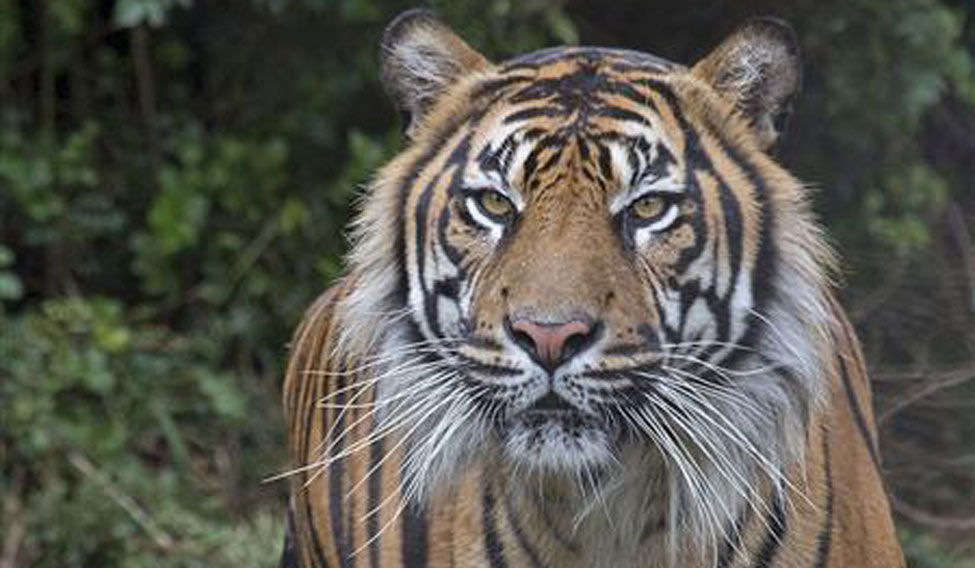The critically endangered Sumatran tiger population, only found on the Indonesian island of Sumatra, is increasing.
This fact came to light in a joint study by the US-based Wildlife Conservation Society (WCS) and the Bukit Barisan Selatan National Park Authority in Indonesia.
The study was published in the paper "A pathway to recovery: The critically endangered Sumatran tiger in an 'in danger' UNESCO World Heritage Site" that appeared in the current issue of international journal of conservation Oryx.
The study showed a Sumatran tiger population density increase to 2.8 tigers per 100 sq km in 2015 from 1.6 tigers per 100 sq km in 2002.
Even the proportion of male and female tigers recently recorded was 1:3.
"This ratio indicates that the tiger population in the National Park is in a healthy condition and breeding opportunity exists for many females within the areas we surveyed," lead author and WCS Species Conservation Specialist Wulan Pusparini said.
"Our study not only looks at population condition, but also used the photographs to assess the threat of people illegally entering the park."
Conservationists during the study set up 123 PantheraCam camera traps over a 1,000 sq km forest block located in a protection zone specially designated by the Bukit Barisan Selatan National Park Authority to improve park protection and aid in the recovery of flagship species.
Timbul Batubara, one of the co-authors and the then head of the Bukit Barisan National Park, said: "The tiger population increase can't be separated from our efforts to maintain this area through ranger patrols. With support from WCS and other partners, we conducted patrols in and around the park to remove tiger and prey snare traps and prevent habitat encroachment."
The increasing population trend in Sumatran tigers is a dream come true, said WCS-Indonesia Country Director and co-author of the paper Noviar Andayani.
"I appreciate the work of the park authority and our field team for their efforts in not only protecting tigers and their habitat, but also collecting robust research data to demonstrate this trend and ensure that in the coming years, the UNESCO Tropical Heritage of Sumatra can be removed from the ain danger list'."
The study was supported by Panthera and the US Fish and Wildlife Service.
The Sumatran tiger or Panthera tigris sumatrae is the only extant sub-species of "island tigers", which includes the now-extinct Javan and Bali tiger.
This sub-species is genetically distinct from the other six sub-species of continental tigers.
Sumatran tigers face many challenges to their continued existence in the wild, where they require a home range of 25,000 hectares.
These include being poached for their skin, bones and other body parts, involvement in conflict with people, a depleted prey base and habitat loss.
WILDLIFE
Sumatran tigers on path to recovery: Study
 Image courtesy | Reuters
Image courtesy | Reuters
This browser settings will not support to add bookmarks programmatically. Please press Ctrl+D or change settings to bookmark this page.




